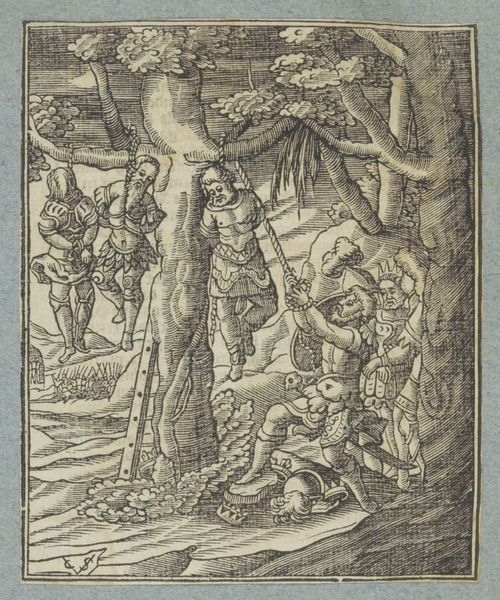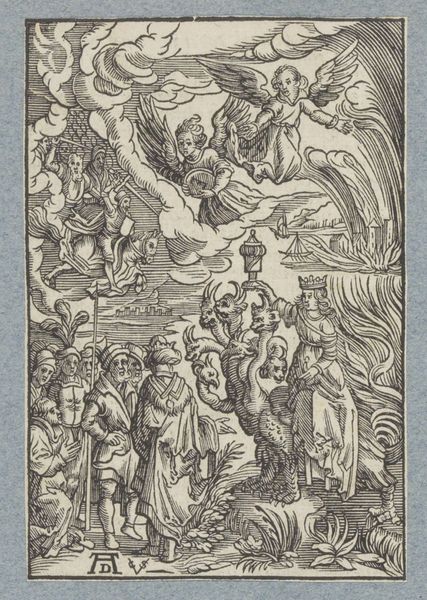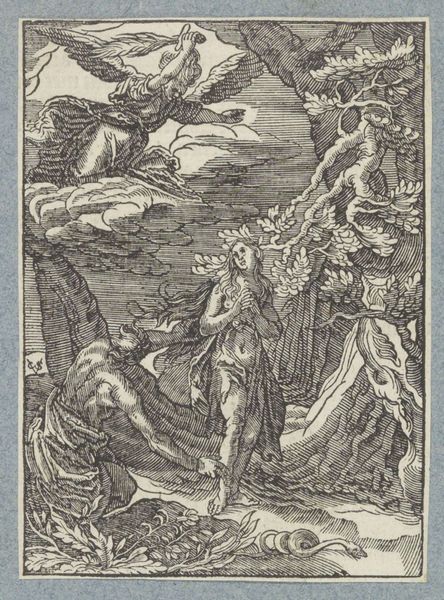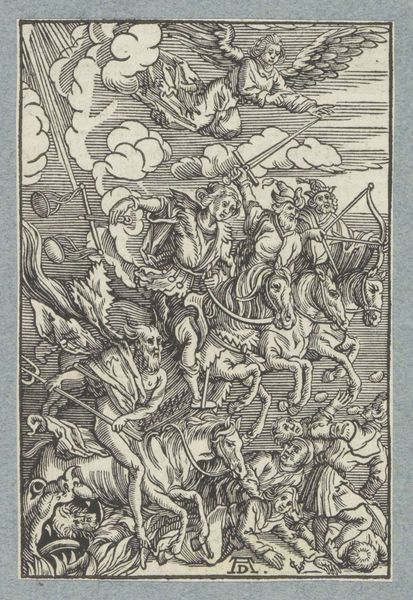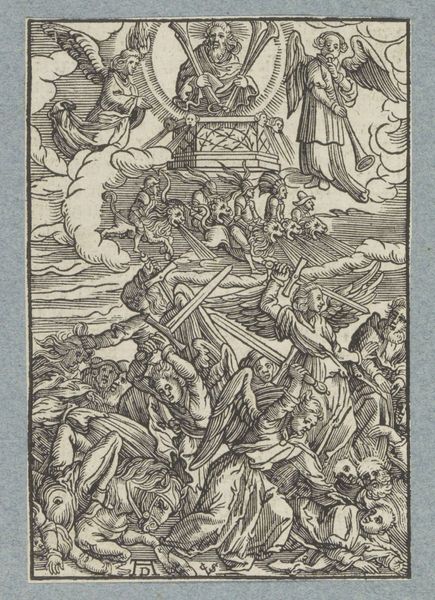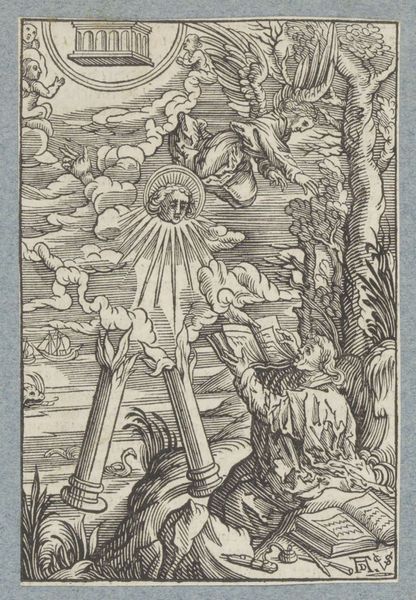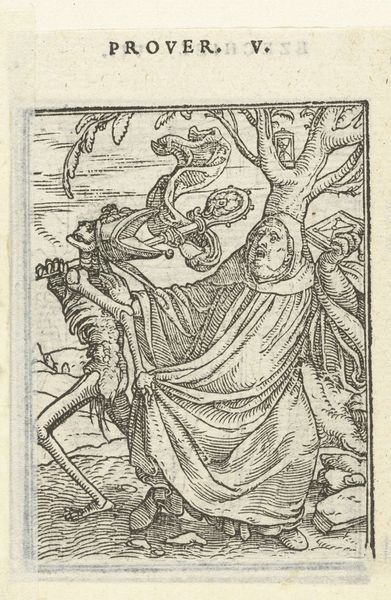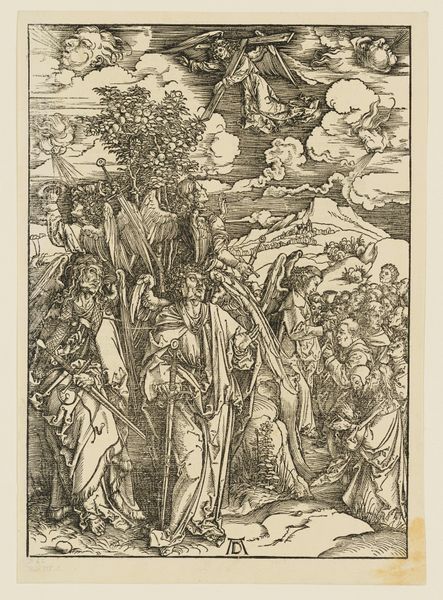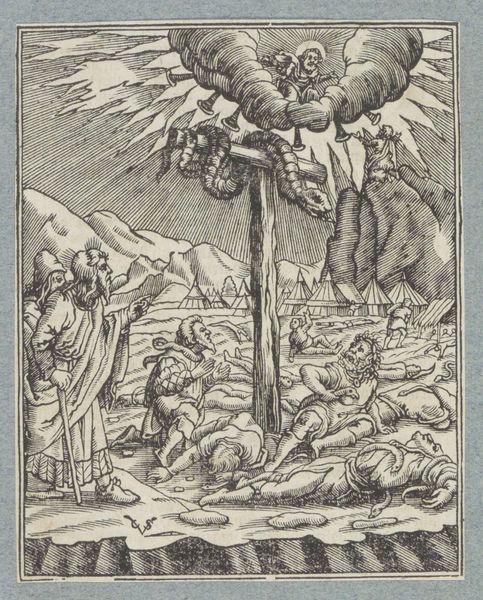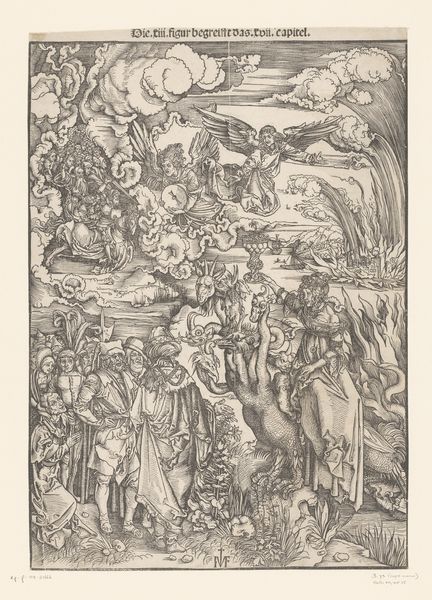
print, engraving
#
narrative-art
#
baroque
# print
#
figuration
#
line
#
engraving
Dimensions: height 113 mm, width 75 mm
Copyright: Rijks Museum: Open Domain
Curator: Immediately, the linear intensity of this engraving strikes me. It is a visual field densely populated by lines, creating textures and volumes that draw the eye relentlessly across the scene. Editor: We're looking at "Engelen houden de vier winden tegen," which translates to "Angels Restraining the Four Winds," an engraving by Christoffel van Sichem the Younger, made before 1646. It’s part of the Rijksmuseum collection, and what resonates most profoundly with me is its depiction of divine intervention amid earthly chaos, touching upon themes of religious authority and power. Curator: Yes, the formal rendering of the angels, so rigidly positioned with their swords, echoes this sentiment perfectly. The lines articulate their power. Consider also the contrast with the delicate wisps denoting the “winds.” It gives an order to it, if one can interpret what those winds might have been to represent to early modern society at that time. Editor: Precisely. This work reflects the tumultuous socio-political and religious climate of the era, a time marked by reformation and the Thirty Years' War. The restraining of the winds can be interpreted as a metaphor for the control exerted by religious institutions. Curator: Furthermore, the composition utilizes a complex arrangement, placing angels at the forefront while directing us into an ever deeper and more dynamic composition. Do you see any potential theological considerations behind that specific construction? Editor: Well, certainly! The division reinforces a hierarchy. The suffering laity seeking intercession are set on the stage by powerful protectors, suggesting the mediating role of the church or possibly rulers blessed with a God-given right, during moments of crisis and instability. There's an undeniable patriarchal framework at play, don't you think? Curator: Indeed. This deep dive truly enables an understanding of van Sichem's message within his artistic and political time. Editor: Analyzing this piece through both a socio-historical perspective and close formal analysis opens doors into the complex world it represents. Curator: Precisely. And now viewers have another lens to interpret this artwork at the Rijksmuseum.
Comments
No comments
Be the first to comment and join the conversation on the ultimate creative platform.
